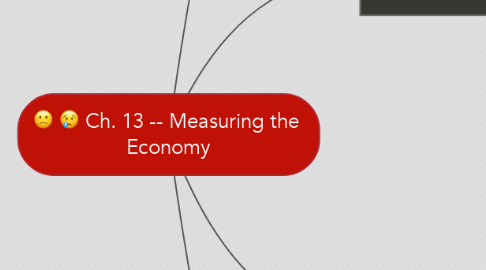Ch. 13 -- Measuring the Economy
by IAN VANENK

1. How do economists estimate the size of the economy?
1.1. They use GDP, which is the market value of all final goods and services produced within a country during a given period of time
1.2. Growing GDP = good economic health
1.3. C+I+G+NX=GDP (C) household consumption (I) business investments (G) govt. purchases (NX) exports minus imports
1.4. GDP = Gross Domestic Product
1.5. Market value = price buyers are willing to pay for a product
1.6. https://www.stlouisfed.org/publications/regional-economist/january-2015/underground-economy
2. What does the unemployment rate tell us about the health of the economy?
2.1. Government determines unemployment rate by surveying a representative group of the population
2.2. unemployment rate = number unemployed/number in labor force x 100
2.3. 100% employment is bad because then there is no competition
2.4. Unemployed: those who are jobless but looking for work
2.5. Frictional unemployment: those who are in the process of switching jobs
3. What does the inflation rate tell reveal about the economy's health?
3.1. Inflation results in loss of purchasing power, which undermines one of the basic principles of money: a store of value
3.2. Higher interest rates are another result of inflation. It makes people save more money, but that slows down the economy because people aren't spending that money
3.3. Loss of economic efficiency is the last big problem with inflation, because producers can't rely on changing prices to give them a good idea of what the market is like
3.4. inflation rate: the percentage increase in the average price level of goods and services from one month or year to the next.
3.5. deflationary spiral: falling prices lead to business slowdowns, which lead to lower wages, which lead to still lower prices, and so on.
4. How does the business cycle relate to economic health?
4.1. 4 phases: expansion, peak, contraction, trough
4.2. Business cycles are popularly known as periods of boom and bust. If businesses are doing well, so is the economy
4.3. Depending on if companies' products are selling, they could lay off workers. That can result in a snowball effect that hurts the economy.
4.4. Measures that consistently rise or fall several months BEFORE an expansion or a contraction begins are called LEADING economic indicators.
4.5. Measures that consistently rise or fall several months AFTER an expansion or a contraction are known as LAGGING economic indicators.


